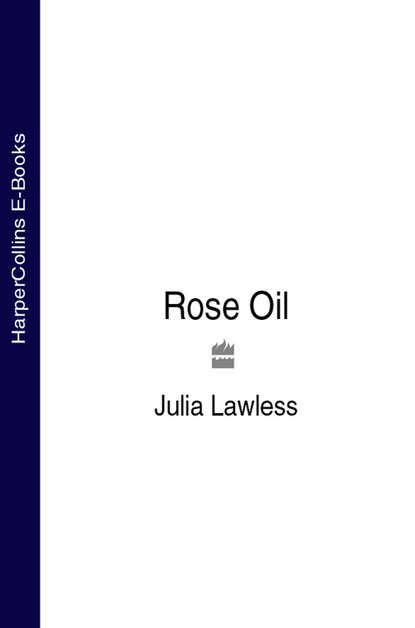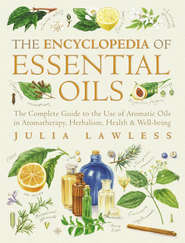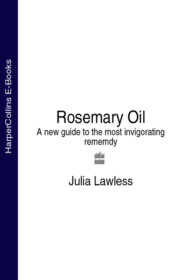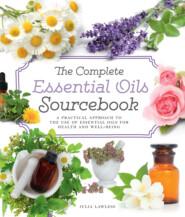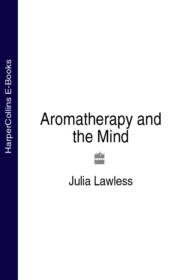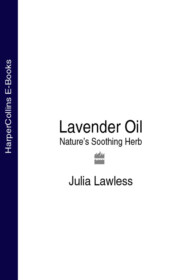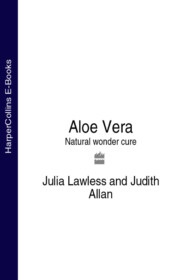По всем вопросам обращайтесь на: info@litportal.ru
(©) 2003-2024.
✖
Rose Oil
Настройки чтения
Размер шрифта
Высота строк
Поля
I would lead thee, sweet love, to the place where the red roses grow.
In Elizabethan times the rose was also used as an image of the transient nature of love, as in the well-known verse by Herrick:
‘Gather ye rosebuds while ye may…’
It was fashionable at this time to use a posy of flowers to convey messages of the heart: a red rose meant passion; a white rose, purity or innocence; a yellow rose stood for jealousy or falsehood! A single red rose is still offered today as a token of love. It is remarkable that over thousands of years, the rose’s symbolic meaning has remained virtually intact, representing the most profound and far-reaching ideals of human aspiration:
The single rose is, in essence, a symbol of completion, of consummate achievement and perfection.
CHAPTER TWO (#ulink_0bd60acf-6282-5fc8-96f0-b116ae1f4362)
The Traditional Medicinal Uses of the Rose (#ulink_0bd60acf-6282-5fc8-96f0-b116ae1f4362)
The rose distils a healing balm,
the beating pulse of pain to calm.
Anacreon
Roses have been used medicinally since the earliest times. In ancient Persia, the birthplace of the rose, rosewater was regarded as something of a panacea, while oils and fats saturated with rose petals were used in religious ceremonies and for balms of all kinds. A paste of pounded rose petals mixed with honey was taken as a remedy for angina and tuberculosis, while an infusion of dried flowers was used as a tea to alleviate diarrhoea and (by women) leucorrhoea.
Preparations made from roses also feature strongly in traditional Chinese, Indian, Egyptian and Arabian medicine. In China, the flowers of a highly scented variety, Rosa rugosa (‘mei gui hua’) are still used in the form of a decoction as a blood tonic and to help stimulate stagnant liver energy, or ‘qi’ (the Chinese word for energy). The petals are also used for digestive or menstrual irregularities, especially to help relieve heavy periods. A rose extract and rose oil made from Rosa rugosa are also used in China, as Li Shih-Chen describes:
Its nature is cooling, its taste is sweet with a slight bitterishness, and it acts especially on the spleen and liver, promoting the circulation of the blood. It is prescribed in the form of an extract for haematemesis, and the flowers are used in all diseases of the liver, to scatter abscesses, and in blood diseases generally… Essence of Rose is made by distilling the flowers of Rosa rugosa. Its medicinal action is upon the liver, stomach, and blood. It drives away melancholy.
In India, likewise, the rose has a long history of traditional usage. In Ayurvedic medicine, Rosa damascena is thought to have a regulating and revitalizing effect, being particularly beneficial for the heart, eyes and the skin:
It is a laxative, and a tonic; and increases semen, and enhances the beauty of the complexion. It has a combined bitter and sweet taste. It is a digestive, restores the balance of ‘tridoshas’ (primary qualities) and it is highly efficacious in blood impurities.
In ancient Egypt, a rose unguent was prepared by infusing the flowers in fat for use in the treatment of various skin complaints and as an ingredient in cosmetics and perfumes. Rose oil together with vinegar and chicory juice was considered an effective cure for headaches. However, it was the early Arab physicians who were the first to perfect the distillation of rose oil as we know it today. They employed the oil to combat an almost endless list of complaints, including:
… headache, sun and heat stroke, hangover, migraine, stomatitis, loss of appetite, gastritis, gastric ulcer, constipation, ulcerous colitis, haemorrhoids, fissures, hepatic diseases, eye affections, dental caries, opium intoxication, insect and snake bites, wounds that did not heal properly, itching and burns.
At one time, the rose also held a prominent place in the Western medical tradition. As early as the fourth century BC, Hippocrates (the ‘Father of Medicine’), described how a perfumed ‘rose oil’ was prepared in Anatolia by macerating fresh roses in olive oil. In addition, he prescribed rose medicaments specifically for gynaecological and obstetric conditions. Then, in the first century AD, Dioscorides compiled the first extensive Materia Medica by drawing on traditional Greek and Egyptian herbal lore … a work which was regarded as an authoritative guide well into the seventeenth century. In this volume, the rose is recommended as a remedy for a wide variety of complaints, including headache, eye and ear disorders, and gastro-intestinal illnesses.
In his Natural History, Pliny the Elder (a Roman contemporary of Dioscorides writing in AD 76) claimed that the rose (R. gallica), prepared in various ways, could be used in the treatment of 32 conditions. These included inflammation of the eyes, the ears and the mouth, stomach ache, toothache, insomnia, the healing of wounds, and for what he called ‘purification of the mind’. Pliny also described how the wealthy Romans filled their baths with rose petals to keep the body young and alluring – a method also employed as a cure for hangover! In a preparation known as diapasmata, or ‘powdered perfume’, petals were dried and finely ground then sprinkled on the body to inhibit perspiration.
Throughout Europe during the Middle Ages, the Gallic Rose was the principal variety grown in monastery gardens; the dried petals were commonly available from the apothecary – thus the name ‘Apothecary Rose’. The dried flowers were mainly used as herb to be strewn on the ground in place of carpets, for pot pourris, or as a herbal ‘simple’.
Roses were in fact prepared in a vast and ingenious variety of ways: an ointment of roses was used to soothe headaches; a syrup to ‘comfort the heart’; rose leaves mixed with mint were applied as a poultice to ‘quiet the over-heated spirits’; infusions of rose leaves and petals, or the petals ingested in honey, were employed as a remedy for coughs, while a rose conserve was prescribed for liver complaints. Rose vinegar was recommended for several disorders including nose bleeds, indigestion, headaches and hangovers, while rosewater was used to soothe sore eyes. At one time, the roots of the wild Dog Rose (R. canina) were even used to treat those afflicted by rabies – ‘the bites of mad dogs’. Rose oil also had its uses:
In the Middle Ages, physicians such as Walafried Stabon of Reichenau, Odo of Maine and Arnold of Villanova used rose oil for complaints ranging from infected wounds to diarrhoea. It was also used in various applications as a treatment for heart diseases, having a cardionic effect and reducing heart trembling.
Nicholas Culpeper, the well-known British herbalist and astrologer writing in the early seventeenth century, dedicated more space to the rose than to any other herb:
Red roses strengthen the heart, the stomach, the liver, and the retentive faculty; they mitigate the pains that arise from heat, cool inflammations, procure rest and sleep, stay both the whites and reds in women … red rosewater is cooling, cordial, refreshing, quickening the weak and faint spirits, used either in meats or broths or to wash the temples, to smell at the nose, or to smell the sweet vapours out of a perfume pot, or cast into a hot fire-shovel. It is of much use against the redness and inflammations of the eyes to bathe therewith and the temples of the head … oil of roses is used to cool hot inflammation or swellings … also put into ointments and plasters that are cooling and binding...
The Damask Rose, according to Culpeper, was in addition a ‘cephalic’, being uplifting to the mind on account of its fragrance. Gerarde, an early European herbalist (1545–1612) tells us that rosewater ‘bringeth sleep which also the fresh roses themselves provoke through their sweet and pleasant smell’. Robert Lovell, writing later in the seventeenth century, also devoted several pages to the rose, and he too made particular note of the effect of its scent:
Oleum rosarum (the oil of roses) is a good perfume; a drop or two cheres the heart, brain, animal and vitall spirits.
It is clear that all the old herbalists were in agreement that roses were very valuable medicinal agents – the Gallic Rose especially being highly esteemed for its cooling, astringent, tonic, regulating and revitalizing effects. However, the eighteenth century saw a decline in traditional remedies as belief in a scientific approach to medicine took hold of the public imagination. Chemical drugs replaced the naturally derived herbal ‘simples’ and the medical pharmacopoeias became increasingly filled with synthetically-derived substitutes. Over the following centuries the therapeutic value of the rose was consequently gradually eroded in favour of its perfumery use and purely decorative appeal. It is only in the twentieth century that the traditional therapeutic values of the rose have been reassessed!
CHAPTER THREE (#ulink_6898a14f-fd98-5fef-901d-5a2de577b1bc)
The Rose as a Twentieth-Century Remedy (#ulink_6898a14f-fd98-5fef-901d-5a2de577b1bc)
A rose is a rose is a rose …
Gertrude Stein, from ‘I am a Rose’ in Sacred Emily
Despite its rich traditional heritage as a folk remedy, by the beginning of the twentieth century the rose had almost vanished from Western medicine. In 1907, the rose growers of the Provence region in France obtained a government warrent that their unguents derived from roses would be used in all French public and military hospitals. In Britain, however, only the wild or common Dog Rose (R. canina) retained its medicinal uses. During the Second World War, for example, it was common for children to be dosed with rose hip syrup, due to its high vitamin C content. The chopped fruits are also still occasionally used as a folk remedy in the form of a decoction for a variety of disorders:
… two and a half teaspoons finely cut fruit per cup of water, boiled for 10 minutes to achieve optimum vitamin C content, several times a day against constipation, colds, gall disorders, and disorders of the kidneys, and bladder; also as a spring tonic and against general exhaustion.
Red rose petals from R. gallica were listed in the British Herbal Pharmacopoeia until the 1930s, mainly as a mild astringent and to flavour other medicines. By 1983, however, only the hips of R. canina are mentioned in connection with gastritis, diarrhoea and poldipsia, and as ‘a dietary supplement as a natural source of vitamin C, together with small amounts of A and B vitamins’.
Вы ознакомились с фрагментом книги.
Приобретайте полный текст книги у нашего партнера:
Приобретайте полный текст книги у нашего партнера:





